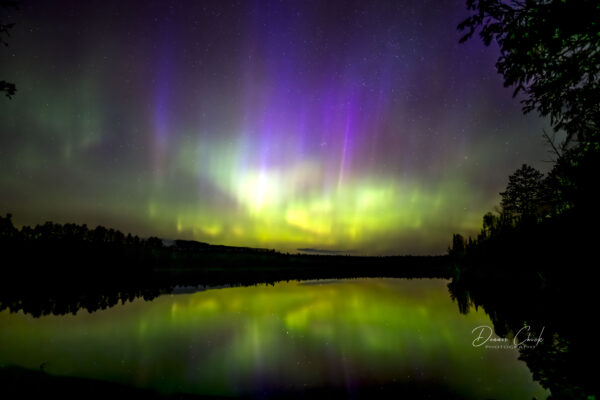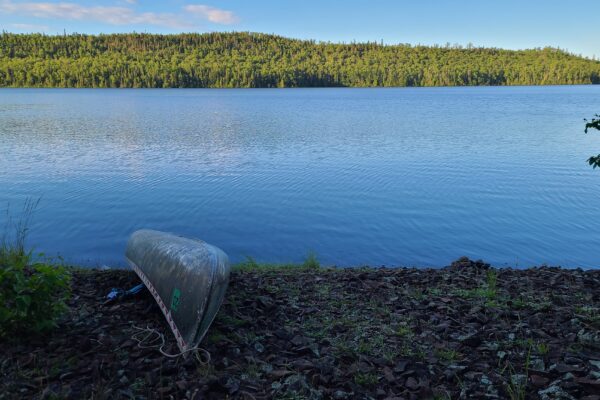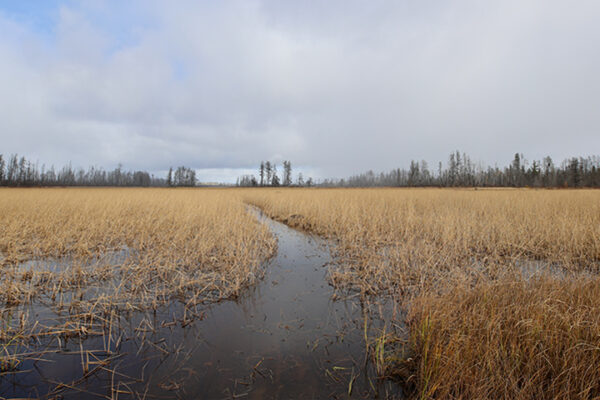Volunteers and Forest Service crews clear the Border Route Trail after 2021 tornado
It’s quite uncommon to hear of tornado activity in northeastern Minnesota. However, in October 2021, an isolated area within the Boundary Waters Canoe Area Wilderness (BWCA) experienced just that.
As Forest Service crews were winterizing equipment and preparing for the long winter months, a tornado touched down north of Clearwater Lake in Cook County.
“We can see damage around the north side of Alder Lake, and then headed north over to Clearwater Lake, and then up into Canada,” said Cathy Quinn with the U.S. Forest Service.
In November, Quinn and Forest Service wilderness crews conducted aerial surveys to assess the damage. Afterward, wilderness crews committed additional time on the ground to determine the full extent of the damage.
Quinn said she was impressed by the tornado trail. She mentioned that the tornado looked different than most straight-line wind events from the air.
While the 2021 tornado was unusual, it wasn’t the only peculiar and significant event in Quinn’s long history with the U.S. Forest Service. She was involved in the clearing efforts after the infamous 1999 blowdown.
“It’s funny to have these events in your career,” said Quinn. She added that the tornado and 1999 blowdown damage bore a resemblance while crews conducted ground assessments.
As the snow finally melted this spring in the BWCA, Forest Service crews, alongside volunteers from the North Country Trail Association and the Border Route Trail Association, took to the trails to start clearing the hundreds of downed trees. The first clearing efforts on the Border Route Trail began during the third week of May.
“Most of the folks on the ground doing the actual work are volunteers. And that partnership is critical,” said Quinn.
Quinn explained that the volunteers helped prep the trail so a team of four Forest Service wilderness rangers could come in and clear with four and six-foot crosscut saws on the larger and more dangerous trees.
With hundreds of trees to clear, the Forest Service had a tough call to make before clearing work could begin. The Wilderness Act, established in 1964, restricts the use of motorized and mechanized equipment within the wilderness area.
So if crews were to clear the Border Route Trail, they would have to do so with a bit more legwork and without the help of a chainsaw.
Quinn was happy to report that the Forest Service crews decided to abide by the Wilderness Act regulations and use crosscut saws instead. She added, “We’re pretty proud that we were able to do that in compliance with the Wilderness Act.”
While there are a few remaining downed trees along the trail, particularly east of the Clearwater to Mountain Lake portage, the trail is open for hikers and outdoor enthusiasts to enjoy.
Quinn said, “We’re pretty proud of the fact that we just reopened the trail so quickly.”
The maintenance of the Border Route Trail and other trails in the BWCA and surrounding areas wouldn’t be possible without the hard work and dedication of the volunteers.
“Almost every single trail in Cook County, at least on Forest Service land in Cook and Lake counties, is managed by a volunteer trail group,” Quinn said.
She is impressed by the efforts of the volunteers and values the relationship between the Forest Service and the trail partners such as the North Country Trail Association, the Superior Hiking Trail, the Border Route Trail, and the Kekekabic Trail Chapter. Quinn wanted to share a big thanks to all of the volunteers who spent their days off clearing and maintaining trails for the use and enjoyment of the general public.
WTIP’s Kalli Hawkins spoke with Cathy Quinn, a recreation and wilderness specialist with the U.S. Forest Service, for an update on the Border Route Trail. Audio from the interview is below.














